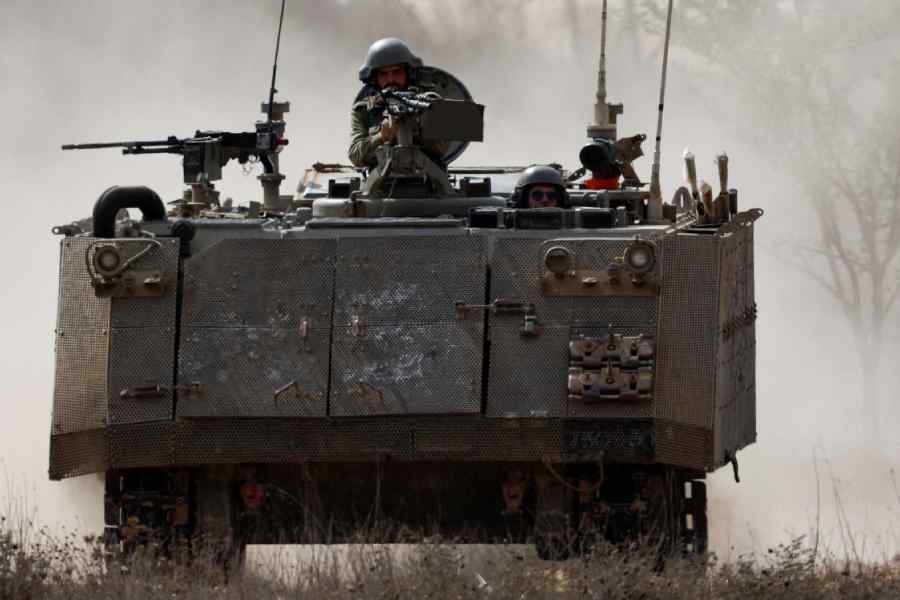Russian forces continue to make small but rapid gains outside of the eastern Ukrainian city of Avdiivka, attributable in part to dwindling Ukrainian ammunition and declining Western aid.
But there’s another reason the Kremlin’s troops are advancing in the area: poor Ukrainian defences.
Sparse, rudimentary trench lines populate the area west of Avdiivka that Ukraine is trying to defend, according to a review of imagery by Planet Labs, a commercial satellite company. These trench lines lack many of the additional fortifications that could help slow Russian tanks and help defend major roads and important terrain.
Avdiivka became the site of a fierce standoff over the last nine months, emerging as one of the bloodiest battles of the war. When Russia captured the city on February 17, its first major gain since last May, the Ukrainian Army claimed it had secured defensive lines outside the city.
But Russian troops have captured three villages to the west of Avdiivka in the span of a week, and they are contesting at least one other.
Satellite imagery at the scale shown here is widely available. US officials said privately that it was concerning that Ukraine did not shore up its defensive lines early or well enough and that it may now face the consequences as Russian units advance slowly but steadily beyond Avdiivka.
British military intelligence said on Thursday that Russian forces had advanced to about four miles from the centre of Avdiivka in the past two weeks, a small but unusually rapid advance compared with previous offensive operations.
Ukrainian commanders have had ample time to prepare defences outside Avdiivka. The area has been under attack since 2014, and Ukraine has had a tenuous hold on it since Russia launched its full-scale invasion two years ago.
But the Ukrainian defences outside Avdiivka show rudimentary earthen fortifications, often with a connecting trench for infantry troops to reach firing positions closest to the enemy, but little else.
The lack of robust Ukrainian entrenchments in the area is especially glaring when compared with the formidable Russian defences that thwarted Kyiv’s advances last summer during the Ukrainian counteroffensive, which ultimately failed.
Russian fortifications outside the southern village of Verbove, which Ukraine tried and failed to retake this fall, show a much different picture.
Unlike the poorly fortified villages that Russian forces are trying to capture outside Avdiivka, Verbove has a concentric ring of fortifications. It starts with a trench wide enough to ensnare advancing tanks and armoured vehicles, followed by a mesh of cement obstacles known as dragon’s teeth — also used to stop vehicles — and, finally, a sprawling trench for the infantry.
Satellite imagery from February shows the multilayered Russian defences to the west of Verbove, with thousands of shell craters visible in the surrounding fields.
There are many possible reasons for Ukraine’s apparent lack of defences.
Ukrainian officials may have been too focused on offensive operations last year to dedicate the necessary resources to building the kind of multiple trenches and tank traps that Russian engineers built since late 2022 in the country’s south, the US officials and military experts said.
“Who cared and who considered it as an option — because it’s a very costly option — the construction of defensive lines? No one,” said Serhiy Hrabskyi, a retired Ukrainian Army colonel, noting that Ukraine had few resources to spare at the time.
There may have also been a psychological element at play, the US officials said. If Ukrainian troops heavily mined certain areas to thwart Russian advances, it would be a tacit acknowledgement that they were unlikely to carry out offensive operations in the same area at a future date. They’d effectively be writing off that territory to the Russian military, the officials said.
While Moscow began building defensive lines in the south more than half a year before Kyiv’s counteroffensive, Ukraine appeared to have begun plans for new fortifications only three months ago, when government officials announced the creation of a working group to coordinate efforts between civilian and military authorities.
Responsibility for building the first line of defence would fall to the military units stationed in the area, the officials said, while the next defensive lines would be built by civilian authorities, with the help of private contractors. Denys Shmyhal, Ukraine’s Prime Minister, said that some 30 billion Ukrainian hryvnias, about $800 million, had been allocated for fortifications this year.
Areas in the eastern Donetsk region, where Avdiivka is, “will receive maximum attention”, President Volodymyr Zelensky said during a visit near the front line in late November, noting the “need to boost and accelerate the construction of structures”.
New York Times News Service











